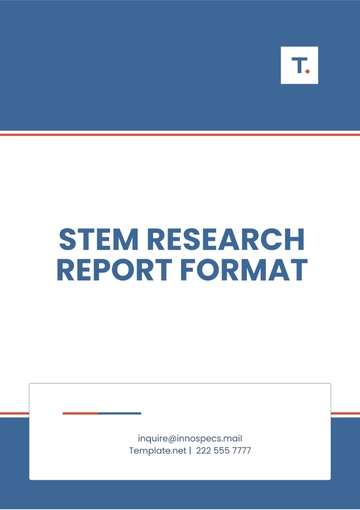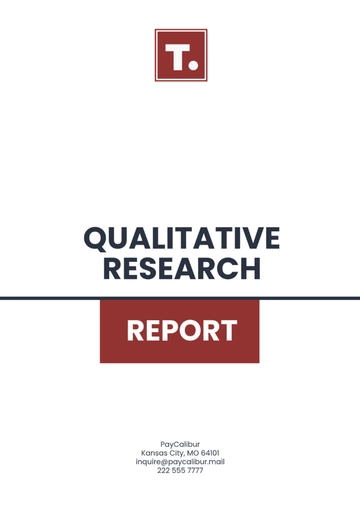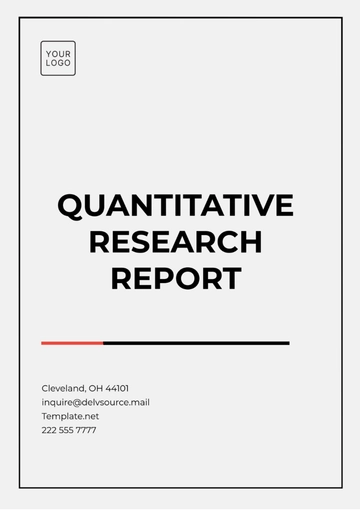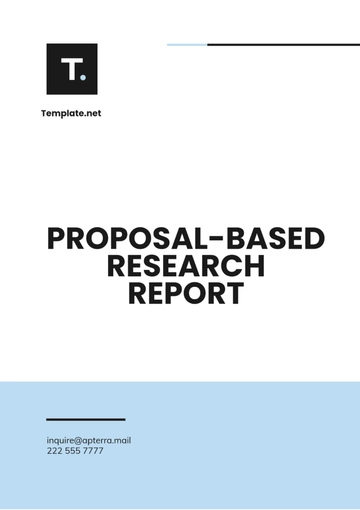Free MBA Research Report

I. Executive Summary
A. Overview of the Business Problem
[Your Company Name], a global leader in cloud computing and artificial intelligence, is seeking to expand into Southeast Asia, a region known for its economic growth and rapid digitalization. The company faces major challenges with regulatory frameworks, consumer behavior, and local competition, raising concerns about direct market entry's feasibility and profitability. It must evaluate various strategies to find the best path to success in the region.
B. Key Findings
Our research reveals that [Your Company Name] is best positioned to enter the Southeast Asian market through strategic partnerships with local firms. These partnerships offer advantages such as regulatory compliance, market insights, and quicker consumer trust. Singapore and Malaysia support tech innovation, but Thailand's strict regulations require caution. A phased approach enables market testing and strategic adaptation.
C. Recommendations
Based on our findings, we recommend a two-phase market entry strategy. In the first phase, [Your Company Name] should establish joint ventures with local partners, leveraging their market knowledge and networks. In the second phase, the company can transition to full ownership by acquiring partner shares and expanding its independent operations. This strategy mitigates risks while ensuring long-term growth potential in Southeast Asia’s dynamic tech landscape.
D. Brief on Research Methodology
To arrive at these recommendations, we employed a mixed-methods research design. Primary data was collected through interviews with industry experts in Southeast Asia, focusing on their insights into market entry barriers and success factors. We also conducted surveys of local consumers to gauge preferences for technology products and brands. Secondary data sources, including market reports and regulatory guides, were analyzed to ensure a comprehensive understanding of each country’s business environment.
II. Introduction
A. Background of the Study
The rapid economic growth of Southeast Asia, combined with increased internet penetration and digitalization, has made the region an attractive target for global technology companies. With a population of over 670 million and a growing middle class, the demand for advanced technology solutions, such as cloud computing and artificial intelligence, is on the rise. However, entering this diverse market is challenging due to cultural differences, fragmented regulations, and strong competition from both local and global players. [Your Company Name] is exploring the region as part of its long-term growth strategy.
B. Purpose and Objectives of the Research
The purpose of this research is to identify the most effective market entry strategy for [Your Company Name] in Southeast Asia. Specifically, the research aims to explore entry options such as direct investment, joint ventures, and strategic alliances, and evaluate their advantages and risks. The study also seeks to assess the competitive landscape in key countries, including Singapore, Malaysia, and Thailand. The ultimate goal is to provide actionable recommendations that align with the company’s expansion objectives while minimizing potential risks.
C. Scope and Limitations of the Report
This report focuses on three Southeast Asian markets: Singapore, Malaysia, and Thailand. These countries were selected due to their growing tech industries and varying regulatory environments, which present unique opportunities and challenges. The scope of the research includes an analysis of market conditions, consumer preferences, and regulatory frameworks. However, limitations include the rapid pace of regulatory changes in some countries and the lack of access to proprietary financial data from [Your Company Name], which could affect the precision of some projections.
D. Research Questions or Hypothesis
The central research question is: "What market entry strategy will provide [Your Company Name] the greatest potential for success in Southeast Asia?" A secondary question is whether partnerships with local firms offer a more effective approach than direct investment. The working hypothesis is that a partnership-based entry strategy will outperform direct entry in terms of market penetration and regulatory compliance. Additionally, we hypothesize that consumer preferences for localized solutions will necessitate collaboration with local partners to succeed in competitive markets like Thailand.
III. Literature Review
A. Theoretical Framework
The Uppsala Internationalization Model forms the theoretical foundation of this study, which posits that companies gradually increase their commitment to foreign markets as they gain knowledge and reduce uncertainty. This model is particularly relevant to [Your Company Name], as the firm is unfamiliar with the Southeast Asian market and must take a gradual approach to mitigate risks. Additionally, Porter’s Five Forces model is used to assess the competitive environment in the region. The combination of these models provides a robust framework for understanding market entry decisions.
B. Review of Existing Studies or Reports
Existing studies highlight the complexities of entering Southeast Asian markets, particularly for foreign tech firms. Research by Dunning (2002) suggests that firms entering emerging markets benefit from strategic alliances, which help them navigate unfamiliar regulatory landscapes and access local networks. Another study by Khanna & Palepu (2010) emphasizes the importance of tailoring business models to local preferences. However, there is limited research focused on the tech industry’s unique challenges, particularly in adapting to digital ecosystems in rapidly evolving markets.
C. Relevant Business Theories and Models
The Eclectic Paradigm, developed by John Dunning, is highly relevant to this research. It suggests that a firm’s decision to internationalize is driven by three factors: ownership advantages, location advantages, and internalization advantages. For [Your Company Name], ownership advantages include its technological expertise, while location advantages are derived from Southeast Asia’s growing digital economy. Another key model is Hofstede’s Cultural Dimensions, which provides insights into how cultural differences between Southeast Asia and the company’s home market may impact business operations.
D. Gaps in the Literature
While there is substantial research on market entry strategies in emerging markets, few studies focus specifically on the technology sector in Southeast Asia. The existing literature tends to emphasize traditional industries such as manufacturing or retail. Furthermore, much of the current research lacks a detailed examination of the regulatory challenges unique to the tech industry, such as data privacy laws and digital infrastructure requirements. This report seeks to fill these gaps by providing a focused analysis of the tech sector’s opportunities and risks in the region.
IV. Research Methodology
A. Research Design
This research adopts a mixed-methods approach, combining qualitative and quantitative data to provide a comprehensive analysis of market entry strategies. The study combines expert interviews with Southeast Asian business leaders and officials for qualitative insights and a quantitative survey of potential consumers in Singapore, Malaysia, and Thailand to gauge tech product preferences, providing a comprehensive view of market trends and consumer behavior.
B. Data Collection Methods
Primary Data
Primary data was gathered through structured interviews with ten experts in the fields of technology, regulatory compliance, and market entry strategies in Southeast Asia. The interviews explored key challenges foreign companies face in the region and the advantages of partnering with local firms. Additionally, a survey of 200 potential customers was conducted to assess their attitudes toward foreign technology products and brand loyalty.
Secondary Data
Secondary data was obtained from market research reports, government publications, and industry white papers. These sources provided insights into the regulatory environment, consumer trends, and the competitive landscape in Southeast Asia. The secondary data also included statistical reports from organizations such as the World Bank and the ASEAN Economic Community, offering a macroeconomic perspective on the region’s digital economy.
C. Sampling Techniques
A purposive sampling technique was used to select interview participants, ensuring that the experts interviewed had specific knowledge relevant to the technology industry and market entry strategies in Southeast Asia. The survey used random sampling to select senior executives, consultants, and regulatory experts from Singapore, Malaysia, and Thailand, ensuring diverse opinions and reliable consumer preference data.
D. Tools for Data Analysis
For the qualitative data, thematic analysis was used to identify recurring themes and patterns in the expert interviews. Key themes included the importance of local partnerships, regulatory compliance, and the demand for localized services. SPSS was used for statistical analysis, including correlation tests, on quantitative data to explore links between consumer preferences and their adoption of foreign tech products. Both qualitative and quantitative data were then combined for conclusions.
E. Ethical Considerations
Ethical guidelines were strictly followed throughout the research process. All participants were informed about the purpose of the research and how the data would be used. Before interviews, consent was obtained, and anonymity assured. No proprietary or confidential company information was disclosed, and data collection followed GDPR and privacy regulations.
V. Data Analysis and Findings
A. Data Presentation
Data collected from our surveys and interviews provided a comprehensive view of the consumer landscape and business environment in Southeast Asia. The table summarizes key consumer survey statistics on preferences for foreign tech products in Singapore, Malaysia, and Thailand, while expert interviews emphasize regulatory challenges and the value of local partnerships.
Country | Preference for Local Tech Brands | Preference for Foreign Tech Brands | Key Concerns for Foreign Brands |
|---|---|---|---|
Singapore | [00]% | [00]% | Data privacy, cost, localization of services |
Malaysia | [00]% | [00]% | Compatibility with local systems, customer support |
Thailand | [00]% | [00]% | Regulatory compliance, brand recognition |
The data shows that while Singaporeans are more open to foreign brands, Thailand exhibits a strong preference for local companies. These findings align with the regulatory and market conditions identified in the qualitative interviews.
B. Analysis of Results
Qualitative Analysis
Interviews with industry experts revealed that regulatory hurdles are a significant barrier to market entry in Thailand. Experts note that foreign companies often face compliance issues due to complex local regulations, especially in tech and data privacy. Forming joint ventures with local partners can aid in overcoming these challenges by leveraging local insights into regulatory frameworks.
Quantitative Analysis
Survey data showed a clear preference for localized technology products, particularly in Malaysia and Thailand, where respondents expressed concerns about the adaptability of foreign products to local needs. In Singapore, [00]% of consumers preferred foreign brands, reflecting an open market, while in Thailand, local partnerships significantly boosted brand trust, influencing foreign brand purchases.
C. Key Trends and Patterns
Several trends emerged from the data analysis. Localization of services, like native language customer support, was crucial for over [00]% of consumers in Malaysia and Thailand. Regulatory compliance, especially in Thailand, was highlighted in feedback and interviews due to past penalties on foreign firms. In Singapore, [00]% of consumers preferred innovation and advanced technology over brand origin.
Trend | Impact on Market Entry Strategy |
|---|---|
High demand for localized services | Necessitates partnership with local firms for better consumer engagement |
Regulatory complexity in Thailand | Requires strategic alliances for regulatory navigation |
Preference for innovation in Singapore | Favors foreign companies with cutting-edge technology |
VI. Discussion
A. Interpretation of Results
The data indicates that a partnership-based market entry strategy offers the best balance between risk mitigation and market penetration for [Your Company Name] In countries like Thailand and Malaysia, where regulatory frameworks are stringent, partnerships with local firms can provide essential support in navigating these complexities. Additionally, the strong consumer preference for localized services highlights the importance of adapting product offerings and marketing strategies to meet local needs, a task that can be effectively managed through collaboration with established local players.
B. Implications for Business Practice
For [Your Company Name], the results suggest that direct market entry through wholly owned subsidiaries may not be the most effective approach, especially in highly regulated markets. Forming strategic alliances with local firms can provide valuable insights into consumer behavior, local business practices, and regulatory requirements, which are essential for success in Southeast Asia. Furthermore, partnerships offer the flexibility to gradually scale operations and establish a foothold in the market before considering full ownership or expansion into neighboring countries.
C. Comparison with Previous Studies
Our findings align with prior research, such as Porter’s (2010) study on competitive strategies in emerging markets, which emphasized the importance of local partnerships for foreign firms. However, this report offers more specific insights into the tech industry, particularly how localization of services and regulatory compliance are critical success factors in Southeast Asia. Unlike previous studies that focused on traditional industries, our research sheds light on the unique challenges and opportunities in the technology sector, particularly concerning digital infrastructure and data privacy laws.
D. Addressing Research Questions or Hypothesis
The research confirms the hypothesis that a partnership-based entry strategy is more effective than direct investment for [Your Company Name] in Southeast Asia. Data from both consumer surveys and expert interviews consistently support this conclusion, demonstrating that local alliances offer a way to reduce risks, build trust, and ensure compliance with complex regulations. In addition, the research highlights that consumer preference for localized products necessitates strong collaboration with local partners, making a phased entry approach the most feasible option.
VII. Recommendations
A. Strategic Recommendations
[Your Company Name] should pursue a two-phased market entry strategy, starting with joint ventures in Thailand and Malaysia, followed by gradual expansion through direct investments once the company has established a strong market presence. Singapore's openness to foreign firms allows direct investment from the start, enabling the company to leverage technological expertise with minimal regulatory barriers while balancing localized engagement and regional market dominance.
B. Actionable Solutions
To implement this strategy, [Your Company Name] should prioritize identifying potential local partners in Malaysia and Thailand who possess market knowledge, regulatory expertise, and established distribution networks. These partnerships will enable [Your Company Name] to quickly localize products and manage regulations, allowing them to establish independent operations in Singapore, rapidly deploy services, and build a competitive brand through strong marketing and innovative solutions.
C. Implementation Plan
In the short term, the company should focus on establishing joint ventures in Malaysia and Thailand, with negotiations and legal formalities finalized within the next six months. In Singapore, [Your Company Name] should quickly establish a subsidiary to capitalize on the business-friendly climate, aiming to gain majority shares in joint ventures for complete integration under a unified strategy within three to five years.
D. Risks and Mitigation Plans
Regulatory changes and geopolitical instability pose potential risks in Southeast Asia, particularly in countries like Thailand, where political environments can shift quickly. Mitigate risks by partnering with local law firms for legal monitoring and structuring joint ventures with flexible exit clauses.
VIII. Conclusion
A. Summary of Key Findings
The findings from this research indicate that a partnership-based entry strategy is the most effective for [Your Company Name] in Southeast Asia. By forming joint ventures with local firms in Malaysia and Thailand, the company can navigate regulatory complexities and build consumer trust, while a direct investment strategy in Singapore allows for rapid market penetration. A phased, localized approach provides the best path forward, ensuring that [Your Company Name] can achieve sustainable growth while minimizing risks.
B. Final Thoughts on Business Implications
Entering Southeast Asia presents significant growth opportunities for [Your Company Name], but success depends on adopting a tailored market entry strategy that accounts for local market dynamics, regulatory requirements, and consumer preferences. By partnering and scaling gradually, the company can secure a strong regional presence while managing risks. Southeast Asia's tech boom presents a prime investment opportunity, but careful planning and localized strategies are key for success.
C. Suggestions for Future Research
Future research could explore the post-entry challenges faced by tech firms in Southeast Asia, particularly regarding regulatory compliance and operational scaling in countries with rapidly evolving digital infrastructure. Studying joint ventures' long-term effects on brand loyalty and consumer perception can offer insights for companies planning similar strategies. Expanding research to include Southeast Asian markets like Indonesia and Vietnam will enhance understanding of the region's diverse business environments.
- 100% Customizable, free editor
- Access 1 Million+ Templates, photo’s & graphics
- Download or share as a template
- Click and replace photos, graphics, text, backgrounds
- Resize, crop, AI write & more
- Access advanced editor
Template.net offers an MBA Research Report Template that is fully editable and customizable to meet your specific needs. With our innovative AI Editor Tool, you can effortlessly tailor the report to reflect your unique insights and findings. Streamline your research process and create a professional report that stands out with Template.net’s user-friendly design.
You may also like
- Sales Report
- Daily Report
- Project Report
- Business Report
- Weekly Report
- Incident Report
- Annual Report
- Report Layout
- Report Design
- Progress Report
- Marketing Report
- Company Report
- Monthly Report
- Audit Report
- Status Report
- School Report
- Reports Hr
- Management Report
- Project Status Report
- Handover Report
- Health And Safety Report
- Restaurant Report
- Construction Report
- Research Report
- Evaluation Report
- Investigation Report
- Employee Report
- Advertising Report
- Weekly Status Report
- Project Management Report
- Finance Report
- Service Report
- Technical Report
- Meeting Report
- Quarterly Report
- Inspection Report
- Medical Report
- Test Report
- Summary Report
- Inventory Report
- Valuation Report
- Operations Report
- Payroll Report
- Training Report
- Job Report
- Case Report
- Performance Report
- Board Report
- Internal Audit Report
- Student Report
- Monthly Management Report
- Small Business Report
- Accident Report
- Call Center Report
- Activity Report
- IT and Software Report
- Internship Report
- Visit Report
- Product Report
- Book Report
- Property Report
- Recruitment Report
- University Report
- Event Report
- SEO Report
- Conference Report
- Narrative Report
- Nursing Home Report
- Preschool Report
- Call Report
- Customer Report
- Employee Incident Report
- Accomplishment Report
- Social Media Report
- Work From Home Report
- Security Report
- Damage Report
- Quality Report
- Internal Report
- Nurse Report
- Real Estate Report
- Hotel Report
- Equipment Report
- Credit Report
- Field Report
- Non Profit Report
- Maintenance Report
- News Report
- Survey Report
- Executive Report
- Law Firm Report
- Advertising Agency Report
- Interior Design Report
- Travel Agency Report
- Stock Report
- Salon Report
- Bug Report
- Workplace Report
- Action Report
- Investor Report
- Cleaning Services Report
- Consulting Report
- Freelancer Report
- Site Visit Report
- Trip Report
- Classroom Observation Report
- Vehicle Report
- Final Report
- Software Report





























